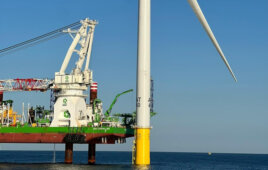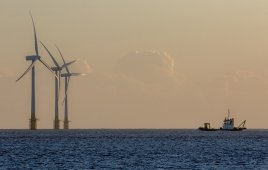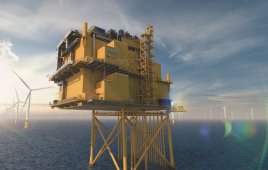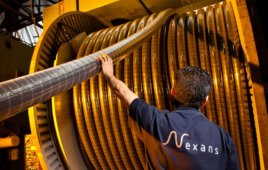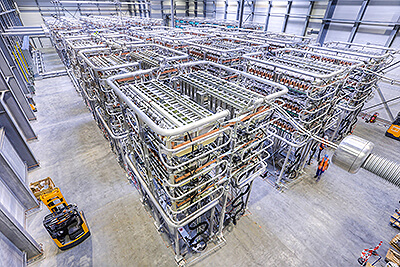
Interior view of a converter station in Büttel in Schleswig-Holstein. Siemens used identical HVDC Plus Power Modules for this project as will be used for the COBRA converter stations.
Siemens has been awarded an order to supply a link between the Dutch and Danish power grids from grid service provider Danish Energinet.dk and its Dutch counterpart TenneT TSO.
The COBRA cable, high-voltage direct-current (HVDC) link will enhance power supply reliability in both countries and promote the integration of renewable energy sources into the power grid. Siemens will supply the two HVDC converter stations at both sides of the DC power line, which will be routed as a subsea cable through the North Sea.
This cable is to be supplied by the Italian company Prysmian, one of the leading cable manufacturers worldwide. The volume of Siemens‘ share of the order is around EUR 170 million. The link is scheduled to take up commercial operation at the beginning of 2019.
“We are extremely pleased to drive forward the development of a high-performance, European interconnected power system together with Energinet.dk, TenneT and Prysmian,” said Jan Mrosik, CEO of the Siemens Energy Management Division. “In fiscal 2015, Siemens commissioned HVDC Plus links with a total capacity of 4.9 gigawatts throughout Europe. With the COBRA order we will bring projects with a further 4.6 gigawatts online over the next few years, thus making a significant contribution to integration of a European power grid.”
The HVDC link between Denmark and Holland has been designated as one of the European Commission’s projects of common interest to help create an integrated European Union energy market.
The scope of the order covers two 700-MW converter stations for a DC voltage of ±320 Kilovolt (kV). The two converter stations, one at Eemhaven in Holland, the other in Endrup in Denmark, will be linked by a 325 kilometer-long DC power cable. The customer Energinet.dk will be responsible for all the construction work in Endrup for erecting the building to house the Siemens converter equipment at that station. Siemens will supply the turn-key converter station in Eemshaven. The scope of the order includes the system design and the supply, installation, and commissioning of all components.
Both converter stations will be using HVDC Plus voltage-sourced converters in a modular multilevel converter arrangement (VSC-MMC) that convert AC to DC and DC back to AC on the other side of the link. In contrast to line-commutated converter technology, the HVDC Plus system works with power transistors that can also be switched off (IGBT), enabling the commutation processes in the power converter to run independently of the grid voltage.
The fast control and protective intervention capabilities of the power converters provides a high level of stability in the transmission system, which primarily serves to reduce grid faults and disturbances in the three-phase AC network. This significantly increases supply reliability for utility companies and power customers. HVDC is moreover the only solution that provides low-loss and economical transmission of electricity for cable-connected high-voltage links over distances of more than 80 kilometers.
TenneT CEO Mel Kroon commented: “Siemens and Prysmian are excellent partners to undertake the realization of this important project. One main purpose of the COBRA cable is to promote competition in the Northwest European energy market, which will ultimately benefit consumers. Because we are directly linking the Dutch and Danish power grids, the security of supply for businesses and consumers in both countries will also increase. Plus the Netherlands will be able to import more renewable electricity, generated mainly by Danish wind turbine farms.”
Siemens
www.siemens.com/energy-
Filed Under: Cables & connectors

